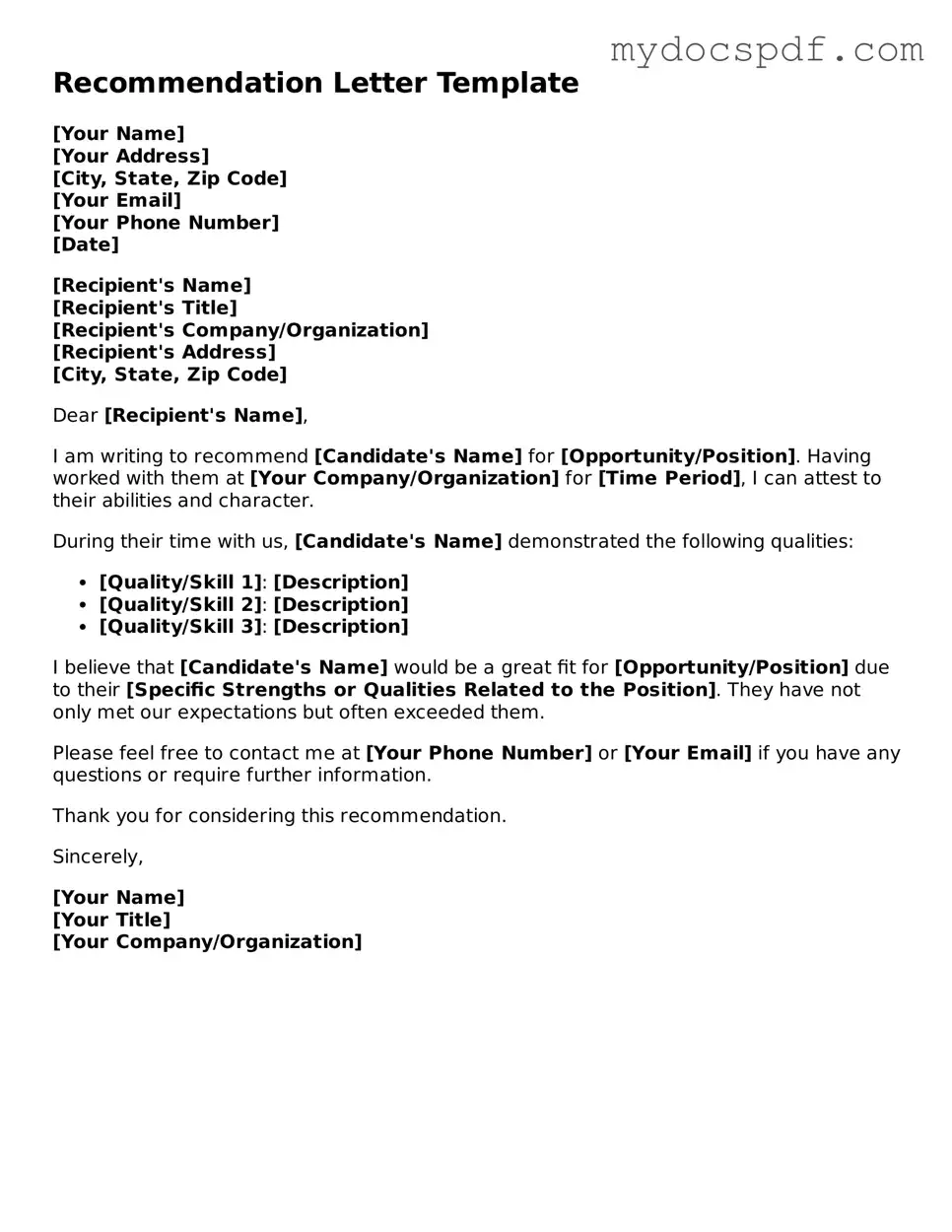Attorney-Approved Recommendation Letter Template
The Recommendation Letter form is a document used to gather insights and endorsements about an individual's skills, character, and qualifications from a third party. This form plays a crucial role in various applications, such as college admissions or job opportunities, where a personal touch can significantly influence decisions. By providing a structured way for recommenders to share their perspectives, it helps paint a fuller picture of the applicant's potential.
Access Editor Here
